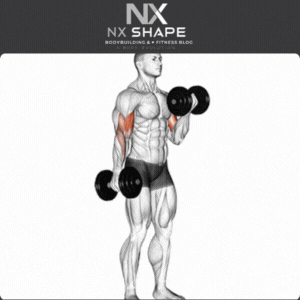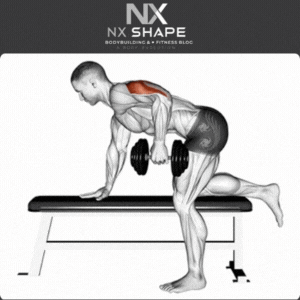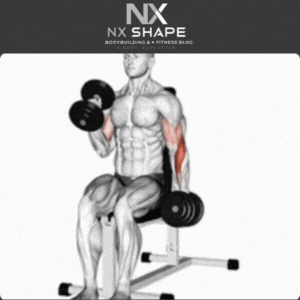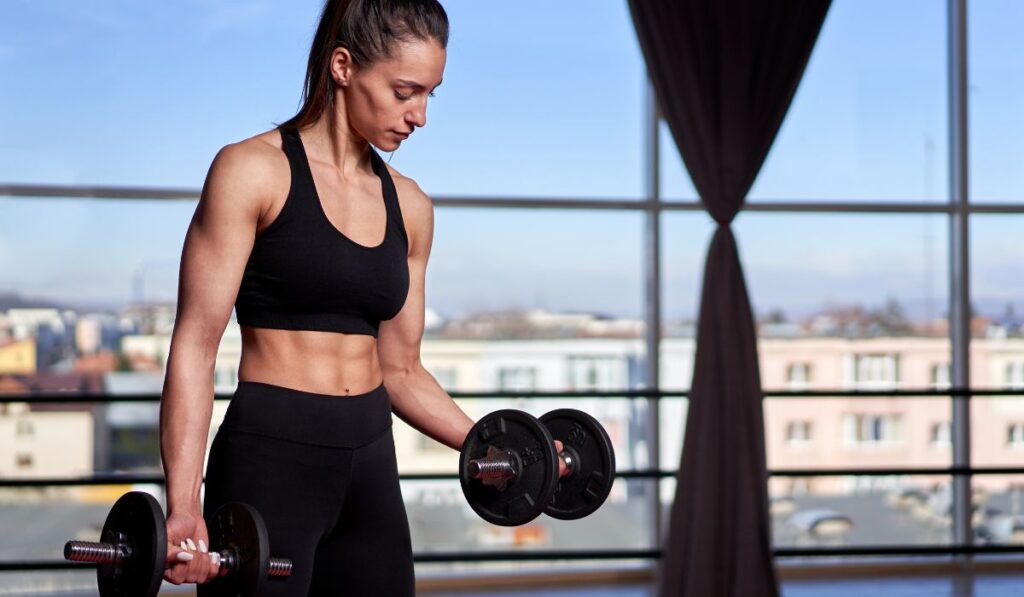Arm workout beginners often wonder how to start without feeling lost or overwhelmed. What exercises actually work, and how do you organize your routine? Let’s break down some simple, effective moves you can try today to build strength and confidence.
understanding basic arm muscle groups
The arm muscles are mainly composed of the biceps, triceps, and forearm muscles. The biceps are located at the front of your upper arm and help with lifting and pulling movements. The triceps, at the back of your upper arm, are essential for pushing exercises and extending the elbow. Forearm muscles control wrist movements and grip strength, contributing to overall arm function.
Biceps
The biceps have two heads that work together to flex the elbow and rotate the forearm. Exercises like curls target this muscle group effectively and help build visible arm strength.
Triceps
The triceps consist of three heads and play a crucial role in straightening the arm. Strengthening your triceps improves your ability to push, which helps in daily tasks and other workouts.
Forearms
Forearm muscles support hand and wrist movement, important for grip and stability. Training these muscles improves overall arm endurance and control, especially during lifting or holding objects.
Knowing these basics helps beginners plan workouts that focus on balanced development, preventing injury and improving results.
Effective dumbbell exercises for beginners
Using dumbbells is one of the best ways for beginners to start building arm strength at home or in the gym. They allow controlled movement and help target specific muscles.
Bicep curls

This classic exercise focuses on your biceps. Hold a dumbbell in each hand with palms facing forward. Slowly curl the weights up toward your shoulders, then lower them back down with control. Perform 3 sets of 10-12 reps.
Tricep kickbacks

To target the triceps, lean forward slightly with a dumbbell in each hand. Keep your elbows close to your body and straighten your arms backward, squeezing the triceps. Return to the start position and repeat for 3 sets of 10-12 reps.
Hammer curls

This variation helps work both the biceps and forearms. Hold dumbbells with palms facing your torso, curl the weights up while keeping palms facing inward. Lower back slowly. Aim for 3 sets of 10-12 reps.
Overhead tricep extensions
Hold a single dumbbell with both hands overhead. Slowly bend your elbows to lower the weight behind your head. Straighten your arms back up focusing on controlling the movement. Complete 3 sets of 8-10 reps.
Consistency with these exercises encourages muscle growth and strength. Start light to perfect your form and progressively increase weight to avoid injuries.
Creating a balanced arm hypertrophy workout

A balanced arm hypertrophy workout focuses on evenly developing all major arm muscles: biceps, triceps, and forearms. To achieve this, your routine should include exercises targeting each group with volume and intensity appropriate for muscle growth.
Include compound and isolation exercises
Compound movements like chin-ups and close-grip bench presses work multiple muscles simultaneously and support overall arm strength. Isolation exercises such as bicep curls and tricep extensions focus on individual muscles, allowing precise hypertrophy.
Plan your sets and reps
For hypertrophy, aim for 3 to 4 sets of 8 to 12 reps for each exercise. This range is ideal to cause muscle fatigue that encourages growth. Adjust weights to challenge yourself while maintaining good form.
Weekly Arm Workout Plan (Twice a Week)
Goal: Strengthen and tone your arms with focused biceps and triceps exercises.
| Day | Exercise | Sets | Reps | Notes |
|---|---|---|---|---|
| Day 1 | Overhead Tricep Extensions | 3 | 10–12 | Focus on controlled movement |
| Hammer Curls | 3 | 10–12 | Keep elbows close to the body | |
| Tricep Kickbacks | 3 | 12–15 | Light weight, slow reps | |
| Bicep Curls | 3 | 10–12 | Full range of motion | |
| Day 2 | Overhead Tricep Extensions | 3 | 10–12 | Can use dumbbell or rope |
| Hammer Curls | 3 | 10–12 | Squeeze at the top | |
| Tricep Kickbacks | 3 | 12–15 | Keep your back straight | |
| Bicep Curls | 3 | 10–12 | Try alternating arms |
Balance pushing and pulling movements
Ensure your workout has an equal amount of pushing exercises (triceps focused) and pulling exercises (biceps focused). This balance prevents muscle imbalances and promotes functional strength.
Incorporate forearm training
Forearm strength is often overlooked but important for grip and arm stability. Include wrist curls and hammer curls to enhance forearm hypertrophy alongside your routine.
Rest and recovery
Muscles grow during recovery, not just in the gym. Allow at least 48 hours before training the same arm muscles again. This rest period is key to effective hypertrophy.
designing your arm day plan at home
Designing an effective arm day plan at home requires planning exercises targeting both the biceps and triceps using minimal equipment like dumbbells or resistance bands. Consistency and progression are key to seeing results.
Choose your exercises
Select a mix of movements that hit all arm muscles. For biceps, include curls and hammer curls. For triceps, try overhead extensions and tricep kickbacks. Add wrist curls to strengthen your forearms.
Set a workout schedule
Plan to work your arms 2 to 3 times per week with at least one day rest in between sessions. This allows muscles to recover and grow stronger.
Structure your routine
Begin with a warm-up such as arm circles or light dumbbell exercises. Then perform 3 to 4 sets of 8 to 12 reps for each exercise. Finish with stretching to maintain flexibility.
Track your progress
Record the weights used and reps performed each session. Gradually increase the resistance or number of repetitions to challenge your muscles and promote growth.
Create a motivating environment
Set up a dedicated space free from distractions. Use mirrors if possible to check your form and stay focused on your workout.
tips to avoid common mistakes and injuries
Many beginners make common mistakes during arm workouts that can lead to injuries. Being aware of these and learning how to avoid them is essential for safe and effective training.
Use proper form
Maintaining correct form during exercises prevents strain on joints and muscles. For example, avoid swinging your arms during curls; instead, move weights slowly and with control.
Start with light weights
Choosing weights that are too heavy can cause injury. Begin with light dumbbells or resistance bands to master techniques before gradually increasing the load.
Warm up before exercising
Warming up muscles with dynamic stretches or light cardio increases blood flow and flexibility. This reduces the risk of pulls and strains.
Don’t overtrain
Allow your muscles time to recover. Training arms every day can lead to fatigue and injury. Aim for 2-3 sessions weekly with rest days in between.
Listen to your body
If you feel sharp pain or discomfort, stop immediately. Pushing through pain can worsen injuries. Modify exercises or consult a professional if needed.
Key takeaways for safe and effective arm workouts
Following proper form and starting with light weights are essential to avoid injuries during your arm workouts. Warming up before exercise helps prepare your muscles and joints for movement.
Remember not to overtrain and allow rest days to help your muscles recover and grow stronger. Always listen to your body and stop if you feel pain to prevent further damage.
By keeping these tips in mind, you can build stronger arms safely and enjoy your fitness journey with confidence.


